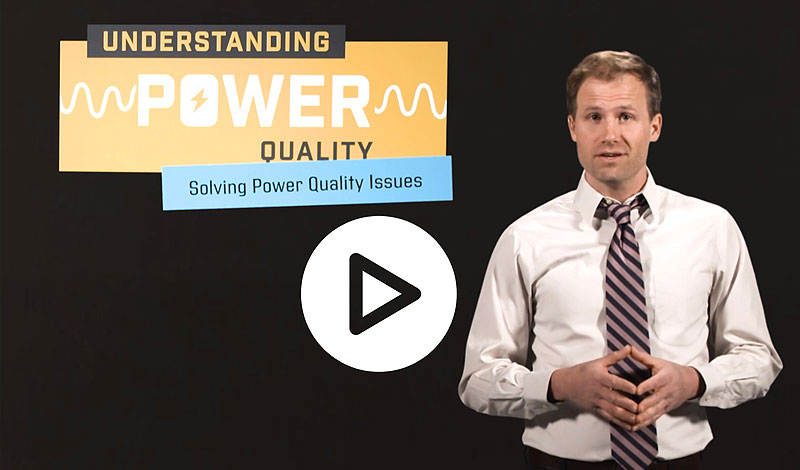There’s no such thing as perfect power quality. It’s a bit like water from the tap. Turn it on and you’ll find water quality that’s acceptable for most applications. But some uses will require more refinement, like filtering drinking water.
The same is true for power quality. Your power quality is only a problem when it’s a problem. When you’re experiencing power quality issues, you need a systematic approach for addressing them.
First, document the symptoms of your power quality issues. Is it equipment damage, motor overheating or the malfunction of sensitive electronics?
Next, find the cause of these symptoms. It may be voltage sags or interruptions, voltage transients, harmonics or voltage imbalance.
In order to find the cause, you’ll most likely need some power quality tools. Simple PQ relays indicate what type of power problem your circuits are experiencing. A more sophisticated power quality data recorder can show wave forms and time-triggered snapshots. To test your circuit’s vulnerability, a sag generator can create sags and dips, swells or interruptions from 100-volt to 480-volt systems.
If you can’t find and fix the problem completely, then helping your equipment survive poor power quality is the second step. This might involve:
- Replacing AC relays with DC relays.
- Changing power supply settings to increase voltage headroom.
- Using a different type of circuit breaker that trips at higher current settings.
- Adjusting the setting on motor drives.
Finally, if all else fails, invest in power compensation equipment that corrects or blocks poor power quality. This can be done at three levels — facility, equipment and component. Compensation equipment includes uninterruptible power supplies or UPS, dynamic sag correctors, harmonic filters, coil holding devices and RC snubbers that capture circuit-breaker transients.
Taking a systematic approach is the best way to prevent power quality problems from interrupting your operations.
